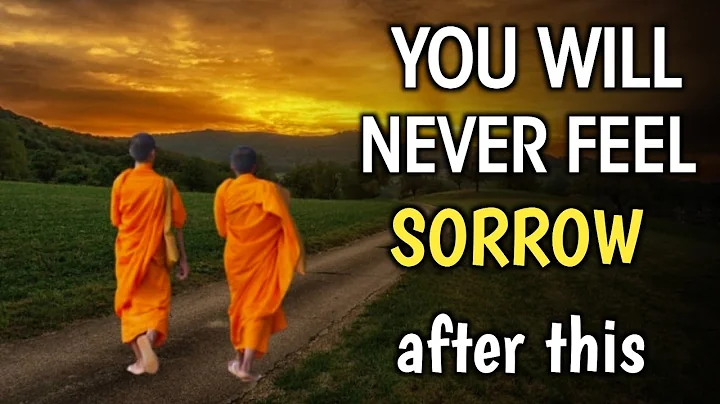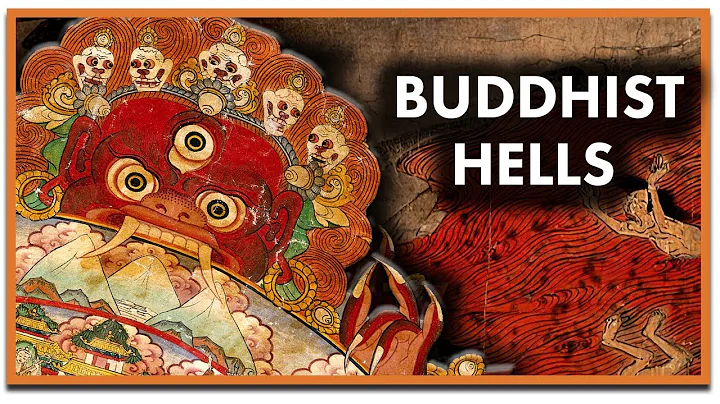
▲ Ksitigarbha Bodhisattva
According to Buddhist scriptures, Ksitigarbha Bodhisattva was instructed by Shakyamuni Buddha to appear in the era of no Buddha after the Buddha was destroyed and Maitreya was born. He vowed to save all sentient beings in the six realms and then wished to become a Buddha;
In his past lives, he had saved his mother who had suffered in hell several times, and since a long time ago, he has been constantly vowing to save all sentient beings in sin and suffering, especially sentient beings in hell.
Therefore, this Bodhisattva is considered to be the representative of "great filial piety" and "great vows" and is respected as "great vows Ksitigarbha Bodhisattva".
Among the people, Ksitigarbha Bodhisattva is generally regarded as the supreme master of hell, also known as "The Netherworld Master" . People often use " I don't go to hell , who will go to hell" , "Hell is not empty, I will not become a Buddha" to describe His hell redemption divine nature. According to the legend, Ksitigarbha Bodhisattva's temple is in Anhui Jiuhua Mountain .

▲ Open-air bronze statue of Ksitigarbha Bodhisattva in Jiuhua Mountain
However, according to Taiwanese scholar Xiao Dengfu , Ksitigarbha Bodhisattva's hell redemption divine nature should be imitating the Taiyi Saving Heavenly Lord who inherits Taoist .
Taiyi Save the Ku Tianzun, a great god with a high status in the Taoist sect, takes saving the Ku as his duties.
Although there are Taoist sutras said that he is "Three Realms to Save Suffer" , that is: seeks voice to save suffering in the world, recommends the souls of the dead in hell, and leads the East Changle Pure Land in the heavens , becoming the common rescuer of the heavens, the human world and the underworld;
However, in most Taoist sutras, Taiyi Saving Suffer Heavenly Lord mainly recommends the souls of hell and redeems of the dead.
According to Professor Xiao's research, the belief in Taoism's Taiyi Saving the Ku Tianzun began around the middle and late stages of Six Dynasties , and even in the Three Kingdoms.
In the Taoist scriptures since the Six Dynasties, the "functions" of Taiyi's Save the Heavenly Lord and his relatives were mostly arranged to be recommended in Hell;
And after the Tang and Song dynasties, there are more classics and rituals about Taiyi's Save the Heavenly Lord's Save the Heavenly Lord and Hell Redemption.

▲ Taiyi Saves the Heavenly Lord
Taiyi Saves the Heavenly Lord Hell Redemption can be roughly divided into "Death Death" and "Preparation" "Preparation" 3 -
3, or "Recommendation", refers to the living person who is free to the dead, get rid of the suffering of hell, and be reborn in heaven.
Pre-practice refers to the fact that when you live in life, you can recite scriptures at a specific time to accumulate merit for yourself after death, so as to avoid suffering from going to hell after death and ascending to heaven.
Among the people, Taiyi Save the Desolate Heavenly Lord has become the master of Taoism and is the most common god when people pursue the souls of the dead. The , the ten directions Save the Desolate Heavenly Lord , which is transformed by him, is also worshipped by believers.
In addition, the Ten Directions Saving the Patriarch also transformed into Ten Palaces of the Pluto , in charge of the affairs of the Nine Nether Hells and Ghosts.
can be seen that in the divine nature of hell salvation, the Taoist Taiyi Saving Heavenly Lord and the Buddhist Ksitigarbha Bodhisattva are very similar.

▲ Taiyi Saves the Deadly Souls
According to Professor Xiao's verification, " Ksitigarbha " first appeared in "The Buddha's Ramaga Sutra" , called "Ksitigarbha Bodhisattva";
, but it is only one of the many listeners when Sakyamuni preached. There is no deeds to speak of, nor does it have any divine character to describe, similar to the passerby in the movie.
The earliest Buddhist scriptures that we see today describe the divine nature of Ksitigarbha are translated by Northern Liang (one of the regimes of the Five Barbarians and Sixteen Kingdoms) "The Sutra of the Great Belly and the Ten Wheels of the Great Belly" , the translator is anonymous; translated by Master Xuanzang of the Tang Dynasty "The Sutra of the Ten Wheels of Ksitigarbha" , which is the second translation of this sutra.
In this sutra, Ksitigarbha appears randomly to save sentient beings from suffering. The divine character is similar to Guanyin .
to the Bodhi Lantern of the Sui Dynasty translated "Sutra for the Retribution of Good and Evil Karma" . The divine character of Ksitigarbha is to extradite the Pure Land of all Buddhas, which is also similar to Amitabha Buddha .
In short, in Buddhist scriptures translated before the Tang Dynasty, Ksitigarbha did not have the divine nature of hell salvation and recommendation to remove the dead souls.

▲ The divine nature of Ksitigarbha Bodhisattva transforms into hell salvation
Professor Xiao believes that the transformation of Ksitigarbha God transforms into hell salvation should be two types of "Ten Kings Sutra" made up by Zangchuan in the early Tang Dynasty ——
"The Buddha said the Ten Kings Sutra of Ksitigarbha Bodhisattva's Cause of Causes and Responses" is a recommended way to eliminate the souls of the dead in hell. According to the ten special death days after death (first seven, two seven, three seven, four seven, five seven, six seven, seven seven, seven seven, hundreds, one year, three years), a ritual of chanting sutras and burning paper money to save the souls of the dead in hell.
"The Buddha said to pre-practice the Seven Sutras of the Ten Kings' Birth" is a method of practice for the living to pre-practice for himself to avoid going to hell after death.
Both sutras regard Ksitigarbha as the master god of hell, and Ten Palaces of Hell is set to govern hell.
Professor Xiao pointed out that , the Central Plains of Buddhist scriptures, does not have the scientific instrument to save the souls of the dead, and there is no pre-cultivation of the seven vegetarians in the seven vegetarians . The two "Ten Kings Sutras" in Tibetan and Sichuan are respectively recommended to remove the dead souls and pre-practice of the living. Their concepts and rituals and should be influenced by the Taoist sutras related to the Taiyi Saving Suffering Heavenly Venerable Hell Redemption in the Six Dynasties.
to Tang Wu Zetian , Shicha Nanda translated "The Original Vow Sutra of Ksitigarbha Bodhisattva" . The first volume describes Ksitigarbha's former Brahmin girl who went to hell to find her mother, and describes the suffering realms of hell; the second volume tells the method of redeeming the souls of the dead and the merits of Ksitigarbha.
This is also the only one involving the redemption divine nature of Ksitigarbha hell in the above-mentioned "Sutra of Ksitigarbha Sutra" and "The Sutra of the Great Collection of Ksitigarbha Ten Wheels of Ksitigarbha" in Ksitigarbha Hell.
Professor Xiao believes that the ritual of salvation of the end of the ritual mentioned in the "Sutra of Ksitigarbha Bodhisattva's Original Vow" should inherit the two "Ten Kings Sutras" from Tibetan and Sichuan; and the source is the ritual of salvation of the national ritual of the Six Dynasties and the divine nature of Taiyi's salvation of the suffering Heavenly Lord in hell.

▲ Ksitigarbha Bodhisattva and the Ten Palaces of Hell
to the Song Dynasty "Jade Li Treasures Note" assisted the Buddha and entered the Tao, and established the Buddhist Ksitigarbha Bodhisattva as the leader of the Netherworld Sect. It had a profound influence among the people and established the status of Ksitigarbha as the master of hell.
In short, Professor Xiao pointed out that In terms of literature, the hell redemption divine nature of Buddhist Ksitigarbha Bodhisattva can be said to be transformed from Taoism Taiyi Saving the Pain Heavenly Lord!
What do you think about this? Welcome to leave a message and express your opinions!
-end-








![[English] Who Am I - Lecture 1 - Ven. Guan Cheng - DayDayNews](https://i.ytimg.com/vi/KU0fUs2It5o/hq720.jpg?sqp=-oaymwEcCNAFEJQDSFXyq4qpAw4IARUAAIhCGAFwAcABBg==&rs=AOn4CLDFpQUN_QwRfC7bmP4sUadq-RcYdg)
![A Moving Masterpiece 清明上河图 [English narration] - DayDayNews](https://i.ytimg.com/vi/kxff-4GktOI/hqdefault.jpg?sqp=-oaymwEcCOADEI4CSFXyq4qpAw4IARUAAIhCGAFwAcABBg==&rs=AOn4CLBtHGLeUpJNCYDJYnZTuISQ1N5Vag)


